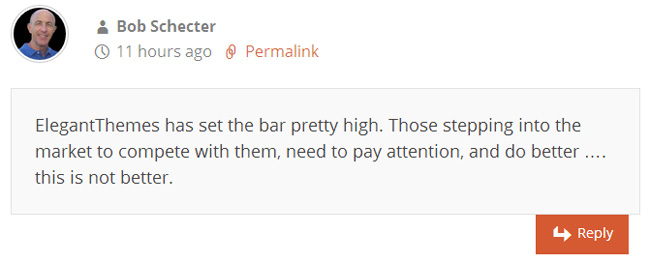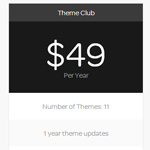Those of you who have developed products and services before will know that it is important to get the pricing strategy correct. Sometimes, that is easier said than done.
To determine the price of a digital product or service, you need to look at what your competitors are charging. However, you also need to set a price that rewards you financially for your time and investment. That can sometimes be a problem, as what you need to charge in order to earn a return that you are happy with may be much higher than what customers believe is fair.
I was reminded of this yesterday after reading two conflicting opinions on the issue.
The first article was written by Philip Arthur Moore. Entitled “We’re Ruining WordPress“, Philip conveys an intelligent view on what is right and wrong with the WordPress community.
He said:
Here’s what I’d like to see: theme shops smart enough to roll their own businesses with higher pricing and an obscene level of precision and dedication to making good products. This means making documentation (both inline and external), code testing, usability testing, and accessibility a top priority. This means selling one theme at $100 instead of two at $50 to reduce support and give more time to making rock-solid, beautiful, well-maintained products that are delightful to use for longer than six months.
It makes sense, doesn’t it. Charge a little more for your products so that you can devote more time to giving your customers great support and a high quality product.
Unfortunately, the market sometimes makes this difficult.
WP Tavern published an article two days ago about Oli Dale’s Theme Furnace WordPress theme store offering lifetime club memberships.
His new pricing structure charges only $49 per year for access to all Theme Furnace designs (currently, there are eleven). Developers can get priority ticket support for $99 per year and at $199, a lifetime club membership offers the same features as a developer license, yet costs the same as two years worth of access.
“The reason we moved to the clubs membership was the vast majority of purchases were for single themes at $49 each,” Dale said. “So we figured that’s a good price people are willing to pay, so if we offer the whole collection for $49, it can only increase sales and that puts our themes on more websites,” he explained.
With most developers charging between $40 and $55 per WordPress theme on ThemeForest, you would think that most people would commend Theme Furnace for such a fair pricing plan.
Sadly, that is not the case.
WordPress user Bob Schecter was not impressed. He left a comment stating that Elegant Themes had set the bar high and Theme Furnace had to do better.

As many of you know, I write for Elegant Themes regularly. Their Divi theme is fantastic and their membership offers 87 premium themes for only $69 per year. It is fantastic value for money.
However, I think it is unfair to compare every WordPress theme store to Elegant Themes. Larger theme stores can afford to drop prices a little due to economies of scale. Smaller theme stores cannot do that. It would put them out of business.
If Theme Furnace had to match Elegant Theme’s price per theme, they would have to sell an unlimited membership for only $8.72 per year. Obviously, they cannot do that, and no one should expect them to.
Pricing is a difficult game. Offering your products and services at a ridiculously low price could help you become a market leader. It could also put you out of business within a matter of months.
“You can please some of the people some of the time, all of the people some of the time, some of the people all of the time, but you can never please all of the people all of the time.” – Abraham Lincoln
While I always want to get a good deal, I hope that sellers price their products and services at a price they are happy with. If not, the quality of support and updates is liable to suffer.
Bear this in mind when you are pricing your own products. You do need to take into account what your competitors are doing, but ultimately, you need to set a price that you are happy with.
Thanks for reading,
Kevin

